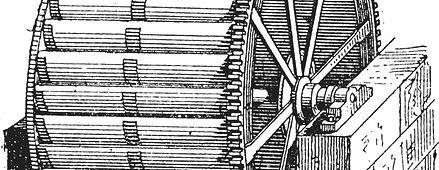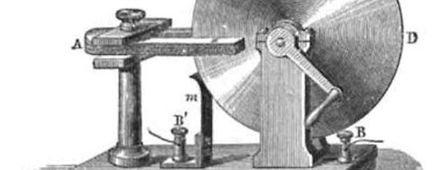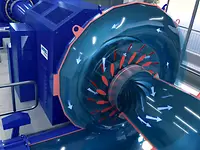The market situation
A new old continent - Europe
Europe is an old continent, home to many western civilizations of legend and awe.
Birthplace of the Renaissance, the age of exploration, and the science revolution – for more than 2,000 years the feats of Greeks, Celts, Romans, Vikings, and their descendants have played out on the stage of world history. Many of the major technological inventions that today span the globe were first explored and developed in Europe. The continent’s outstanding people have played no small part in building the modern world and to this day Europe remains an important global influence on world culture, politics and its economy.

Ground-breaking technological, as well as human and social, development continues in this extremely diverse and complex continent. Modern, sophisticated global companies make Europe their home and leading European figures continue to influence future global energy strategy. Europe is and always has been, a bridge from old to new.
Europe is the westernmost part of the Eurasian continent and is bordered by the Arctic Ocean to the north, the Atlantic Ocean to the west, and the Mediterranean, Black, and Caspian Seas to the south as well as the Ural mountain range and river in the East. With an area of 10,180,000 km2, Europe is the world’s second smallest continent, but one of the most densely populous. It is home to more than 900 million people.
Europe has the largest economy in the world, representing one-third of the total global wealth. It is home to the EU-28, the largest single economic area in the world, and Europe also includes five countries ranking in the top 10 of the world's largest national economies in GDP (PPP). This includes Germany, the United Kingdom, Russia, France, and Italy. The average living standards are the highest in the world and in the world’s history.
Europe - the cradle of hydropower


Using the flow and fall of water to facilitate labor is as old as civilization. The first documented water wheels date back more than 2,500 years and water has been used for agriculture, irrigation, and grist-, saw- and textile mills since ancient times. The ability to take advantage of water with technology goes hand in hand with the development of civilizations and economies throughout history.

Since the Greeks implemented the Archimedes screw in about 200 BC, the development of hydropower technology has largely taken place in Europe. The Romans used water wheels and invented the boat mills, in use in Europe until the Middle Ages.

It was during the course of the science revolution in the 17th and 18th Centuries that the evolution from the water wheel to the turbine took place. European academics set the course. German doctor and physicist Johann Andreas von Segner invented the Segner water wheel, a kind of reaction turbine. Ancestor to the modern turbine, the Segner wheel is still used for sprinkler systems today. Swiss mathematician and physicist Leonhard Euler come up with the “turbine equation” in 1757. This describes the flow of frictionless elastic fluids, a fundamental calculation for turbine engineering. With his idea to arrange a guide wheel above the turbine, he is considered as the inventor of the guide mechanism, an important component of modern turbines to this day. In the mid-1770s, the French engineer Bernard Forest de Bélidor published his book "L'architecture hydraulique" describing vertical- and horizontal-axis hydraulic machines for the first time.

It took another 80 years of research and experimentation before Jean-Victor Poncelet developed an inward-flow turbine in the 1820s. A break from the traditional undershot wheel, this new design had more than double the efficiency. In 1827 Benoît Fourneyron, another French engineer, built his horizontal outward-flow turbine of unequalled efficiency. Featuring two concentric wheels and the runner firmly connected to a shaft, his turbine was installed in numerous factories across Europe and elsewhere. It helped power the industrialization of the mid-19th Century and today its development is widely considered the birth of the modern turbine concept.

One of the most important milestones in hydropower history was the invention of the first electric generator by Michael Faraday in 1831. This made it possible to generate electricity from hydropower. In 1837, German technician Carl Anton Henschel built his axial high-pressure turbine, which French engineer Nicholas J. Jonval subsequently patented. Now known as the Henschel-Jonval Turbine, water leaves the turbine through a central suction pipe – the origins of the draft tube design. Today, the breakthroughs by Henschel and Jonval are found in most turbine arrangements.

In the late 1840s, Ferdinand Redtenbacher and Julius Weisbach both wrote essential books about scientific mechanical engineering and formulated mathematical turbine theories. Their work enabled the precise calculation of energy conversion and output when water strikes turbine blades – a crucial step in the development of modern hydropower technology.

James Bicheno Francis, inventor of the Francis turbine in 1849, was born in England. Irish engineer James Thomson contributed to the turbine control system and German Carl Ludwig Fink invented adjustable guide vanes, with which the Francis turbine could operate efficiently. Consequently, the Francis machine became the most commonly used turbine and is still the most widespread hydro machine in use today.

One of the founding fathers of the ANDRITZ Hydro family tree was not European but the American engineer Lester Pelton. Nonetheless, since their first construction in 1879 Pelton turbines have been continuously developed in European laboratories ever since – first and foremost at ANDRITZ Hydro. The Pelton impulse turbine design has attained great importance as the best solution for high-pressure applications, especially in the Alpine regions and in Scandinavia.

One other major turbine type has its birth in Europe – the Kaplan turbine. The demand for electrical energy, for more speed, and better efficiencies at low heads was rising and existing machines of the time could not meet these requirements. In 1913, the Austrian professor for engineering – Viktor Gustav Franz Kaplan – invented the eponymous turbine. His design features wing-shaped blades, which are adjustable for optimal use across varying water volumes.

Based on the Kaplan turbine, the Bulb turbine was developed by Escher Wyss (now ANDRITZ Hydro) in Zurich, Switzerland, in 1936.
An arrangement of turbine combined with generator – the Bulb machine marks another milestone in hydropower development and is the perfect application for high capacities and low heads.





